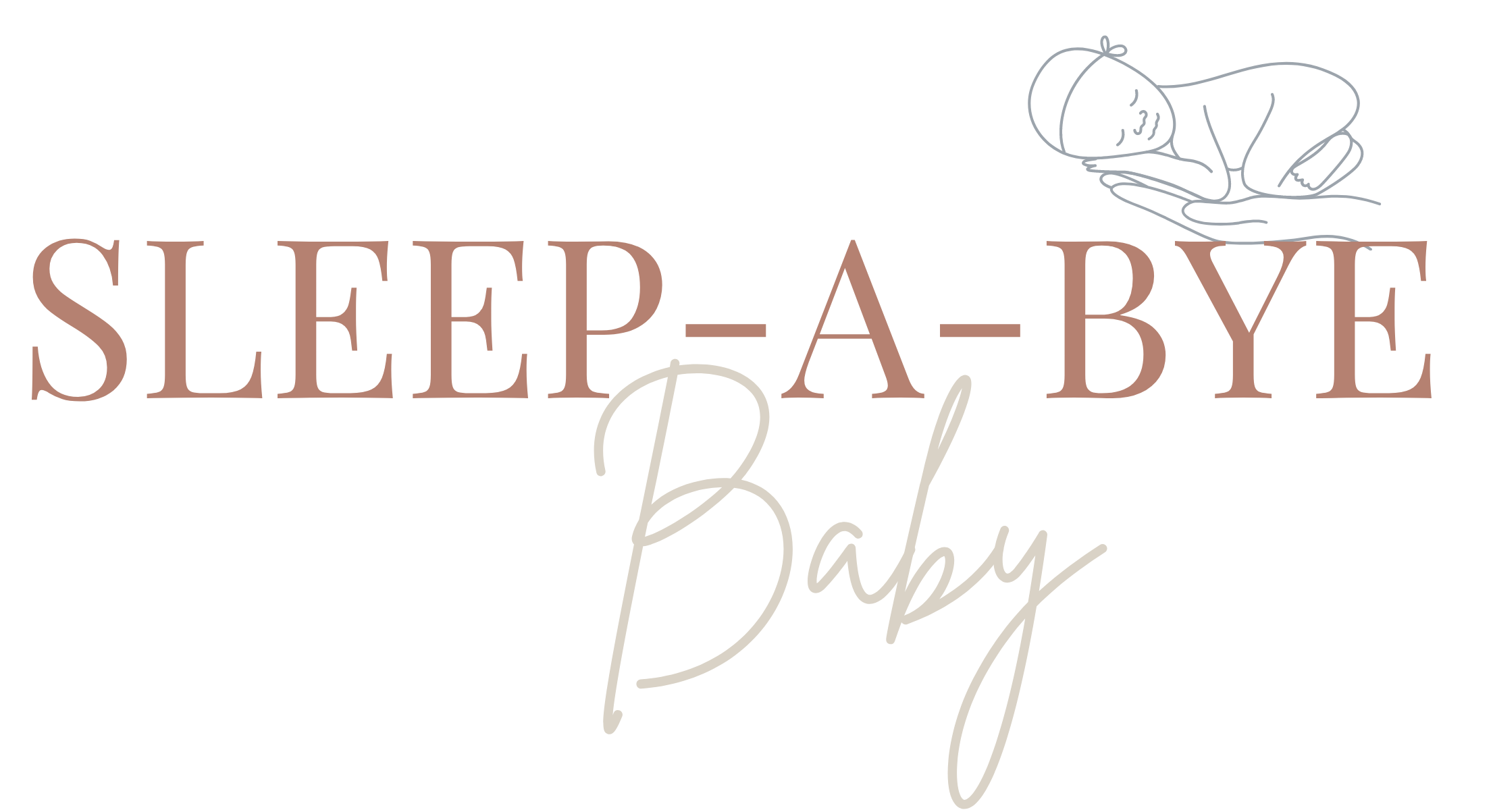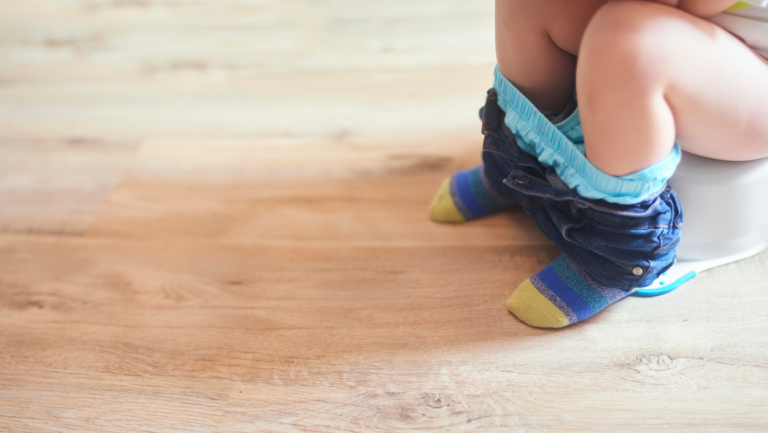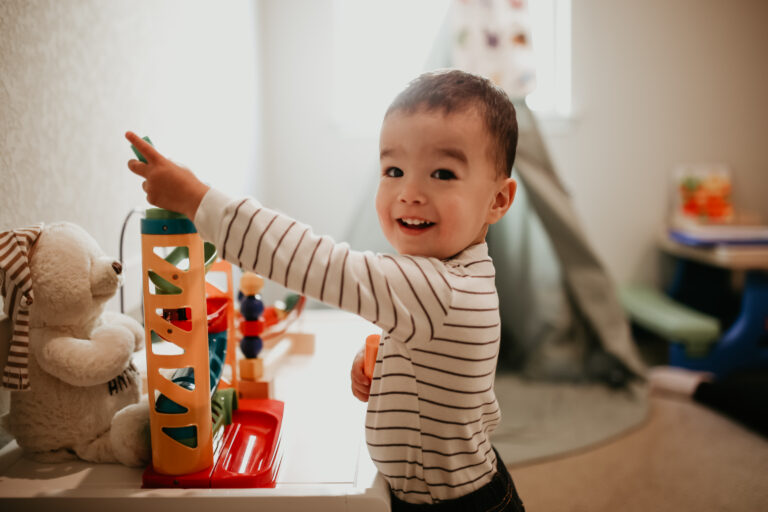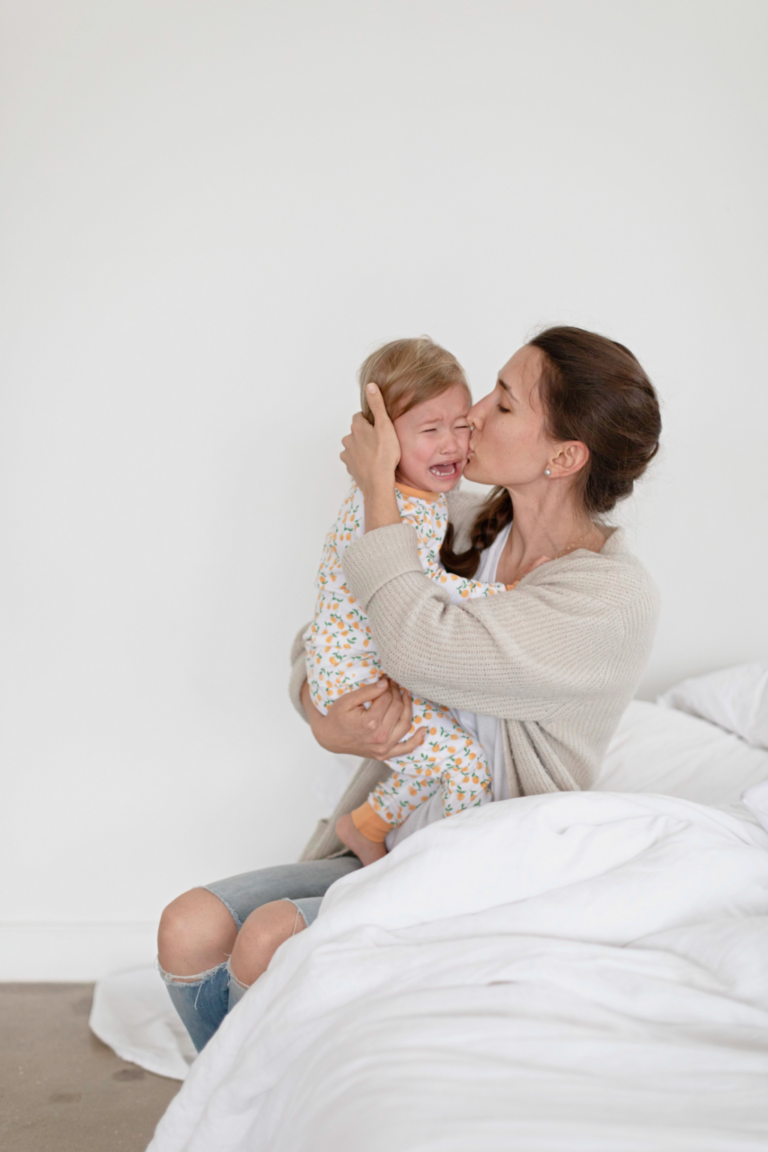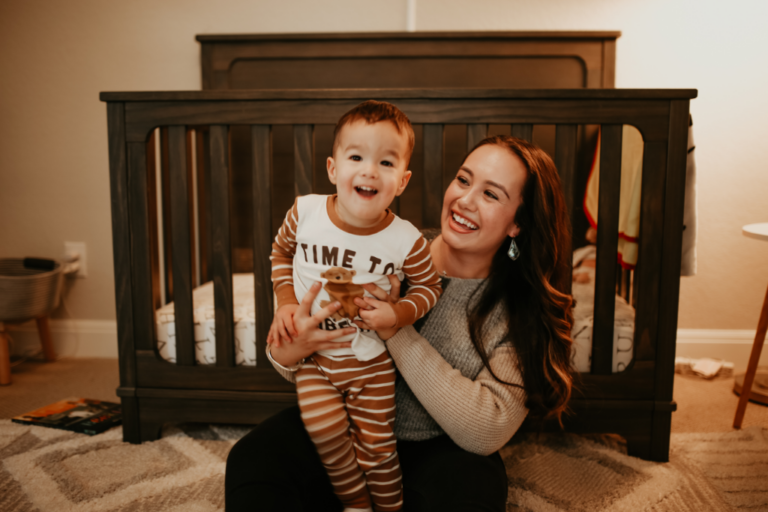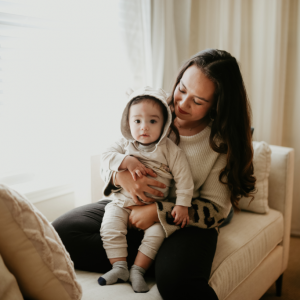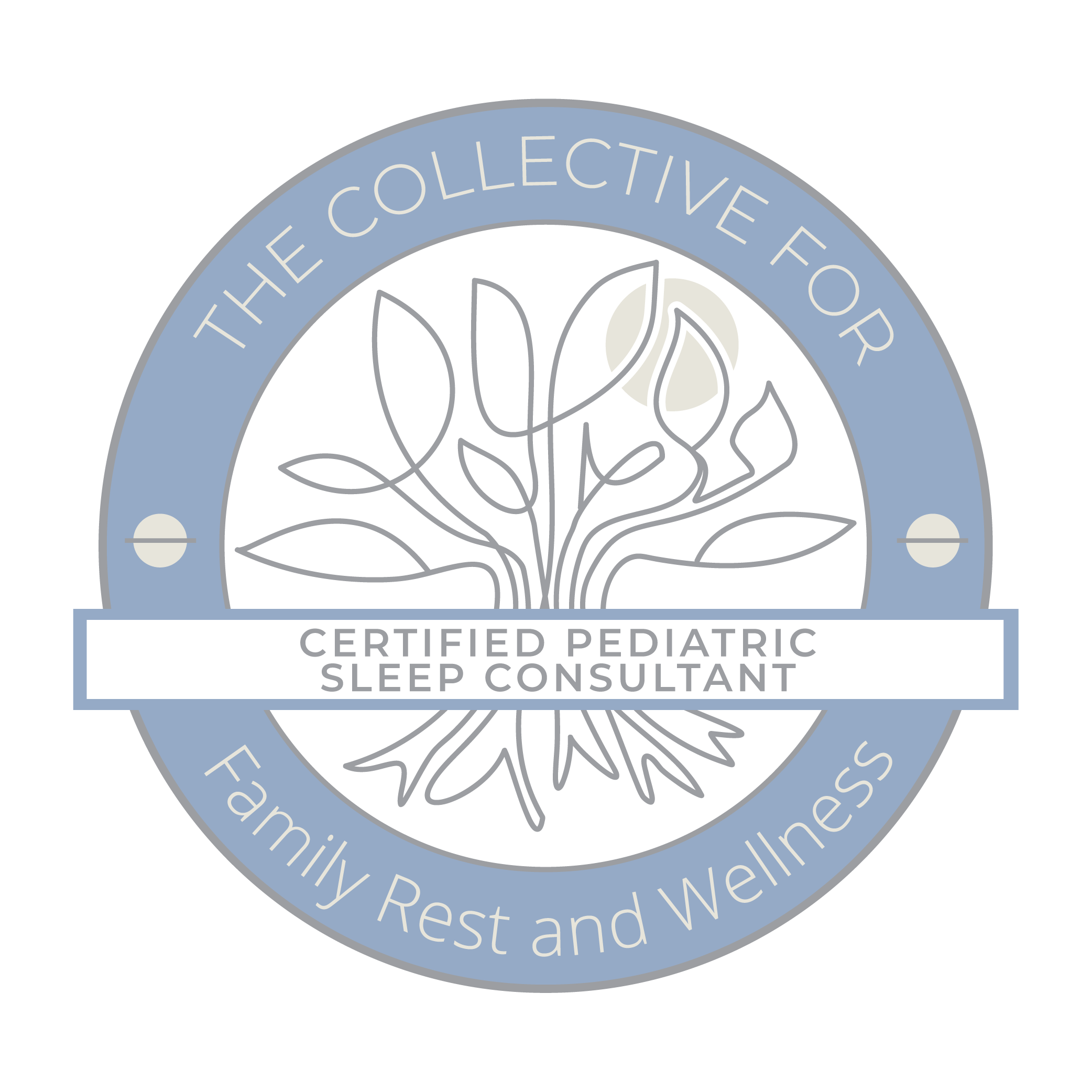So your baby is starting to sleep longer stretches at night and BAM…out of nowhere, they start waking earlier in the morning and are having numerous night wakings. Maybe you notice that your little one is also skipping naps and even starting to protest bedtime. Or maybe you have never had that great of a sleeper, and your child starts going from sleeping short stretches at night to not sleeping at all! They are getting fussier and protesting all of their naps and bedtime.
What is going on?!
Even though there could be numerous reasons why your child’s sleep habits are changing from what seems like one hour to the next – there could be a very common and normal explanation for your baby’s sudden trouble falling and staying asleep. REGRESSIONS. Oh, those dreaded regressions!
Whether you have never heard of sleep regressions before, or you maybe have heard all about them from your sister or your best friend who had struggles with their baby’s sleep regressions – these “bumps in the road”, as I like to call them, are something that you will get very acquainted with in the first two years of your child’s life.
But, just like anything in life, the more we understand something, the better we can tackle it head-on with the right tools and support!
What exactly is a sleep regression?
A sleep regression is a period of time – can range from two weeks to 1 month – when your baby’s sleep and developmental needs start changing which can cause night wakings, short naps, and early wakings for your little one.
These regressions are described by parents as coming on “all of a sudden” and “without warning.” Your “then” newborn who was able to be rocked to sleep, and placed down without any problem, is now an infant who is waking up immediately once you leave the room, is protesting their naps, and is waking up constantly in the middle of the night.
Main causes of sleep regressions
Sleep regressions can occur for two main reasons – developmental and external factors. Let’s take a dive into each of these.
Developmental regressions
Developmental regressions are the regressions that occur in certain months of a child’s first two years of life. The three main developments include gross-motor, cognitive, and sleep needs.
Gross-motor developments include learning how to roll over, crawl, sit, stand, walk, and all the in-between! Your baby will start to place accomplishing these new skills at the top of their priority list causing sleep to be pushed to the bottom of the totem pole!
Cognitive developments include newborn sleep patterns maturing into infant sleep patterns that are aligned more with adult sleep. Other cognitive developments include object permanence, separation anxiety, becoming more “aware” of surroundings, talking, and independence-seeking.
Changing sleep needs is the last reason developmental regressions occur. As our children mature from newborn, to infanthood and to toddlerhood, their sleep pressure (also known as the internal biological need for sleep), starts to take longer to build as they get older – meaning that they can start staying up for longer periods of time without needing to sleep! This will result in infants transitioning to fewer and fewer naps as they get older, and will also start needing less sleep at night. You can grab my free wake window guide to see the average number of naps and how much sleep your little one can be getting based on their age!
External regressions
While developmental regressions can cause predictable bumps in your child’s sleep journey, external regressions can be unforeseeable and can cause sleep issues as well.
External regressions include any outside factors that can cause stress (either good or bad). Examples include growth spurts, teething, starting daycare, sickness, and introducing a new sibling into the family. These factors can throw our child’s routine off and can cause distress where more comfort from a parent is needed. This can result in new sleep associations that were not previously there such as co-sleeping or rocking or feeding your baby to sleep. Once a new sleep routine is established it can cause your child to start relying on these new sleep associations to fall and stay asleep. This is why a child will start protesting or crying more for naps and at bedtime when parents try to switch them back to their previous routine prior to the external regression occurring. Sleep training as early as 3 months can help dampen the effect external factors have on your child’s sleep.
When do developmental regressions occur?
There are 5 developmental regressions that occur in the first two years of life that can have a profound effect on your child’s sleep. This does not mean that the 4-month regression will happen right at the start of the month! Every child is different and may experience this regression a little before the 4-month mark or even closer to the 5-month mark. However, I have listed out regressions by months below and have included why they occur at these times.
4- month sleep regression
The 4-month sleep regression occurs due to 3 factors:
- Baby sleep patterns permanently change and mature
- Rolling
- 4-3 nap transition
Around the 4-month mark, your child will start sleeping in stages and cycles, similar to an adult. How much this developmental change will impact your baby’s sleep depends in part on how they fall asleep. If they have started to practice the skill of falling asleep without parental assistance, your child’s sleep may not be affected by this transition in sleep cycles. However, if your baby has been used to feeding or rocking to sleep, for example, there will be a high likelihood of your child experiencing night wakings and short naps. This is a great time to start sleep training your child so they can start learning how to independently sleep
8-month sleep regression
The 8-month sleep regression occurs due to 3 factors:
- Object permanence & separation anxiety
- Crawling & sitting
- 3-2 nap transition
12-month sleep regression
The 12-month sleep regression occurs due to 3 factors:
- Becoming more aware of surroundings-more and interested in playing than sleeping
- Walking & talking
- Do not need as much sleep (this does not mean that they will transition from 2-1 naps quite yet but it is in the near future!)
18-month sleep regression
The 18-month sleep regression occurs due to cognitive milestones including:
- Talking
- Independence-seeking (tantrums and the like)
24-month sleep regression
The 24-month sleep regression also occurs due to cognitive milestones and changing sleep needs
- Increase in language skills
- Independence seeking (this will not go away for a while!)
- Combined with a lot of external factors including potty training, 2-year molars coming in, nightmares, separation anxiety, etc.
What you can do for your infant to get them through these regressions
It is important to note that every child is unique and will respond to developments in their cognitive and physical milestones, changes in sleep patterns, and external factors differently. One child may not be affected by the 4-month regression at all while another child may take an entire month to finally come to a stable sleep routine. However, we can control how our children respond to these regressions to a degree by utilizing some important sleep tips.
Practice, practice, & practice some more!
Whether it is learning how to crawl or attempting to stand in their crib, your baby is going to be excited about accomplishing their new gross-motor skills. When this happens, sleep is moved to the bottom of their priority list, causing night wakings and early mornings.
However, the best way to make sleep more of a priority at nap and bedtime is to give your little one opportunities to practice all day so they are not tempted to practice all night! Yikes!
Utilizing tummy time in a safe space, and having your baby walk all around your home will help tire them out enough that they will eventually want to sleep. Every baby is different when it comes to this, and some are more strong-willed than others – so practicing may only help a little BUT giving your child the opportunity to practice their new skills will always be a win-win for both baby and you!
Learn your baby’s sleep cues
During these regressions, your baby will start to get overtired from losing sleep. So it is important to learn your baby’s specific sleep cues so you can introduce nap and bedtime when they are starting to get tired. There are such things as “early” and “late” sleep cues. When your child is displaying “late” sleep cues it means they are officially overtired and they will have a much harder time going to sleep and staying asleep.
So really observing and learning your baby’s “early” sleep cues such as staring off into space, tugging at ears, or slowing down during play-time can indicate that it is time to start getting them ready for bed.
Set a consistent nap and bedtime routine
Even though there is light at the end of the tunnel of regressions, it can be very unnerving for our babies, especially if they are losing sleep in the process. So one of the best things you can do during these times is to set a consistent nap and bedtime routine if you do not already have one, or stick with your regular routine as much as possible! This is because our babies can get very overwhelmed and overstimulated from changes, whether internal or external – so holding onto a routine they can rely on can be soothing for them.
Offer comfort as needed, but refrain from reinstating old habits
Your child will be in more need of cuddles and kisses during these regressions and this is more than okay! We want to make sure that we offer both presence and support for our kiddos. However, if you have weaned your child off their pacifier or have stopped feeding and rocking to sleep, try to refrain from reinstating old habits that your child will rely on after these regressions pass. If you are wanting to introduce rocking to sleep for example back in your routine that is more than okay! However, if you are wanting to go back to your regular routine prior to the regression, it is best to hold strong and offer as minimal assistance as possible.
Consider sleep training
Regressions are unavoidable but utilizing sleep training before these regressions start occurring can really set your child up for success. If you are interested in working 1:1 with me to help support you in your child’s sleep training journey or have questions about how to work with your baby during these regressions, you can book a discovery session with me so we can go over options.
Remember that sleep training is very personal to each and every family unit and is CHILD and family-specific! If you have questions about the type of support you will need, please go to my support options page, to learn more.
Live, Laugh, & Sleep Well Honeys!
